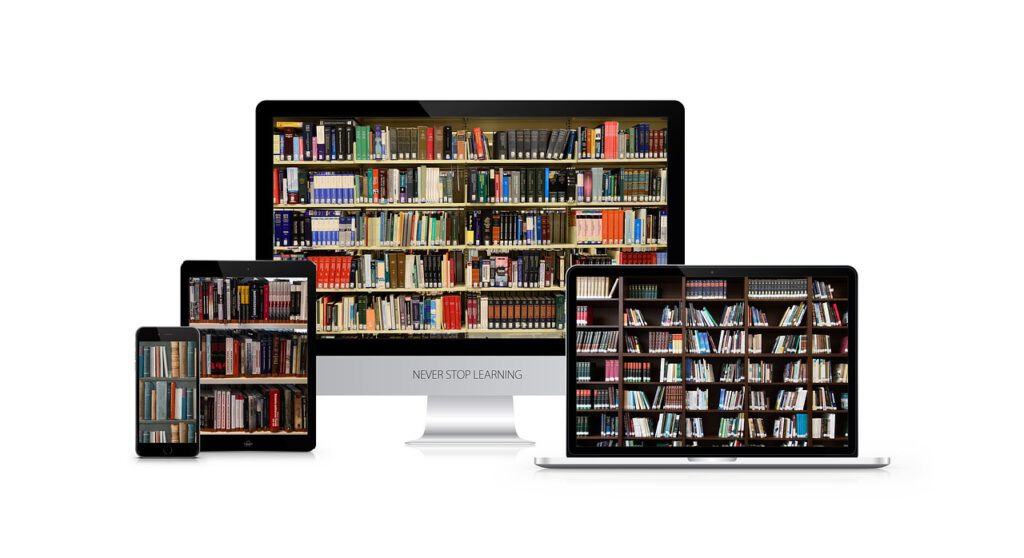Can the UK Skills Gap Be Bridged Online? A Look Back at the Education Challenges of 2020

Teaching has been dealt a huge blow by the coronavirus pandemic, with thousands of schools all around the UK forced to close during national lockdowns. This has led to a massive challenge for educators: implementing remote learning.
It’s no surprise that educators with zero remote learning experience struggled. They were met with challenges such as unmotivated students, technical difficulties, and more.
On the flip side, educators who were armed with the right tools and strategies were able to turn things around by delivering a top-notch digital learning experience to their students. In this article, we’re going to take a look at what the coronavirus has meant for schools, and we’ll also set out the core challenges faced by educators – as well as how they overcame them.
Coronavirus and School Closures
In the UK, over 32,000 schools and over 8 million pupils were been affected by the coronavirus. As a consequence, teachers were been forced to respond immediately to the crisis, with education itself changing dramatically. There was a clear expectation across UK governments and administrations that schools will provide pupils with remote education and they are also committed to supporting teachers.
But what happened when more help was required?
The Way Forward
The coronavirus pandemic prompted a sudden and unexpected shift from traditional classrooms to remote learning. Teachers leveraged electronic technologies to help them deliver courses to their students outside the classroom, such as via video conferencing tools, LMSs, and course authoring tools.
And, while no one foresaw or planned this, remote learning actually increased student retention of information. This means that even when the coronavirus pandemic disappears, eLearning may be here for a long time to come. In other words, this isn’t a temporary solution – it’s potentially the catalyst for a better learning future.
The education sector, then, responded swiftly, with some educators meeting the challenges faced by the new situation head-on. Here’s what we discovered.
Top 5 Challenges Educators Overcame in Response to COVID-19
If you were or are still struggling to get to grips with online teaching, here are the top 5 challenges educators faced over the past year, as well as how they overcame them:
1. Unmotivated Students
Without teachers being right there next to students while they learned, boredom set in and students became unmotivated. Students who without motivation saw a drop in engagement. Teachers had an added challenge to ensure students remained engaged in education the process, as to optimize each student’s learning and development. Without an extra push, students ran the risk of failing the year or dropping out of their education altogether.
An interesting way of overcoming this challenge remotely was via gamification.
Gamification is when we use gaming elements to bring to life a non-gaming experience. This isn’t game-based learning, but rather a process that enables you to reward specific learning outcomes.
For example, educators can use a learning management system that has a gamification focus to positively influence their student’s behavior and hand out rewards that motivate them to achieve certain milestones. You could award badges upon the completion of a task, points that signal progress, and you could even create leaderboards that put your students in competition with each other.
Aside from gamification, teachers could also leverage a messaging platform to build your own fully-customized messaging app that all students can access. This helps them to stay engaged by communicating with each other productively.
2. Students Struggled to Adapt to Digitized Learning
Not every student adapted to digitized learning straight away. Some did, but others needed more help getting to grips with the tools and learning processes.
As such, teachers had to look at ways to optimize their onboarding process. To do this, they sought to get each student onto their system as quickly as possible. Then, they sent an announcement (usually via email blast) with the right details and information in it, such as links to relevant tutorials, resources, and the course outline. It’s important that students knew where everything was and how they could access it all in the early stages.
Teachers need to be sure to cover all the tools they would be using, too.
As an educator, if some of your students are still struggling, ask them what they’re struggling with. What onboarding challenges are they facing? What can you do to help?
3. Disorganized Study Schedules
Everyone has different study habits, but having to shift to online learning caused students to lose track of their schedules. This, of course, had a negative effect on mission-driven performance.
Today, Artificial Intelligence is not only well established and widely utilized – it’s booming. And whilst there’s never a good time to have a pandemic, the fact that we’re in 2021 means educators and their students can leverage Artificial Intelligence to personalize the learning experience.
AI is able to learn more about what a student does and does not know. Considering these knowledge gaps, it creates a personalized study schedule that allows them to study at their own pace. The schedule is optimized to suit each student’s own needs and, ultimately, it boosts efficiency.
4. The Wrong Remote Learning Tools
If teachers chose the wrong tools from the outset, they and their students were instantly at a disadvantage. One of the most important decisions an educator can make is to choose eLearning tools that align with their overall goals, and that have all the necessary features for the classroom.
It’s a good idea to identify all the tools and software you and your students need. Teachers who did so were at an advantage. These tools included learning management systems, such as Blackboard, content management systems, such as Google Docs, and web conferencing software, such as Zoom.
The successful schools and instructors were the ones who spent some time researching their options. They check out comparison reviews and deepened their knowledge of the available tools. If you’ve already got a tool but it clearly doesn’t have all the features you need, see what else is out there. Don’t settle.
5. Students Couldn’t Participate Fully in Video Conferences
The coronavirus pandemic has seen the rise in eLearning – which itself triggered a huge rise in video conferences.
With video conferences, accessibility was key. And, while video software such as Zoom is fairly intuitive, not everyone who needed to participate in the online education system started out tech-savvy. Moreover, some students may faced multiple accessibility issues and needed some help.
Fortunately, video conference software allows teachers to improve accessibility by providing hotkeys and shortcuts. They also provide support for closed captioning, which means students who could not hear the recordings could still participate.
And, if a student couldn’t access a video conference live, Zoom provided users with a full transcript that could be delivered to the students after the conference was over. The transcript was stored in the cloud, where teachers and students could access it.
While not traditionally used by formal educators, online course platforms also came in handy during the pandemic. Instructors used the built-in tools to create courses and share playback of video conferences with students who were unable to attend live classes.
Conclusion
The coronavirus pandemic has changed the world for a lot of people. Because our children are the future, it’s super important that we continue to build upon the actions that have allowed them to not just survive during these testing times, but to also thrive.
If we continue to develop processes that optimize the learning experience, such as those outlined above, the future could be brighter than ever for all involved.











Responses